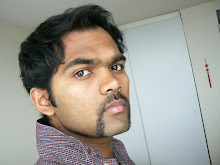THE LONGEST DAY
 The longest day (northern hemisphere) is upon us. June 21st is when the Sun's rays are perpendicular to the tropic of cancer. The Earth's rotation axis is titled at an angle of 23.37°, which makes the seasons possible. The axis remains tilted in the same direction throughout a year; however, as the Earth orbits the Sun, the hemisphere (half part of earth) tilted away from the Sun will gradually become tilted towards the Sun, and vice versa. This effect is the main cause of the seasons.
The longest day (northern hemisphere) is upon us. June 21st is when the Sun's rays are perpendicular to the tropic of cancer. The Earth's rotation axis is titled at an angle of 23.37°, which makes the seasons possible. The axis remains tilted in the same direction throughout a year; however, as the Earth orbits the Sun, the hemisphere (half part of earth) tilted away from the Sun will gradually become tilted towards the Sun, and vice versa. This effect is the main cause of the seasons.The axis of tilt makes the light from the Sun to get unevenly distributed across the planet. From the above picture, sunsets at various points across the Earth can be seen. The red line roughly indicates the zero degree prime meridian (Greenwich Mean Time). It can be seen that darkness has fallen across most of Europe and Africa. It is a known fact that the Sun sets in the East first and then in the West. In places like Liberia in West Africa (10° West of the prime meridian), the Sunset has already begun; however the Sun has not yet set in parts of northern Norway (15° East of the prime meridian). This contradiction is explained by the tilt in the earth's axis and the subsequent length of day.
In accordance with this concept, it has been observed that June 21 is the date for summer solstice in the northern hemisphere. The picture on the left shows this phenomenon, where we find that in areas north of the Arctic circle (66.5° N), there is no sunset. Likewise, around the Antarctic circle (66.5° S), there is no sunrise on this date.
 All along the north-south direction, the amount of sunlight and length of the day increase as we go from south to north. Around the equator, the length of the day and night are equal throughout the year. So in a year's time, the amount of sunlight around the equator is more or less the same everyday. Which is why places close to the equator have no seasons. Whichever hemisphere is currently tilted toward the Sun experiences more hours of sunlight each day- currently it is the northern hemisphere. Since the equatorial regions receive sun's light at a vertical angle all year around, tropical regions are hotter than other regions.
All along the north-south direction, the amount of sunlight and length of the day increase as we go from south to north. Around the equator, the length of the day and night are equal throughout the year. So in a year's time, the amount of sunlight around the equator is more or less the same everyday. Which is why places close to the equator have no seasons. Whichever hemisphere is currently tilted toward the Sun experiences more hours of sunlight each day- currently it is the northern hemisphere. Since the equatorial regions receive sun's light at a vertical angle all year around, tropical regions are hotter than other regions.Today is also officially the first day of summer for many countries in the northern hemisphere. Bangladesh has implemented its daylight saving time from today where it pushes the clocks ahead. "The longest day" is also the name of a book and a movie, which is about the D-Day landings of the Allied forces in Normandy, France, on June 6 1944. On another note, as I write this, the Sun has shone on Pakistan's T20 cricket team- they emerge the T20 champions, defeating Sri Lanka in the finals!
Picture copyright:
Federation of American Scientists (www.fas.org)
San Francisco State University (www.sfsu.edu)



